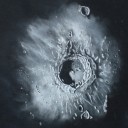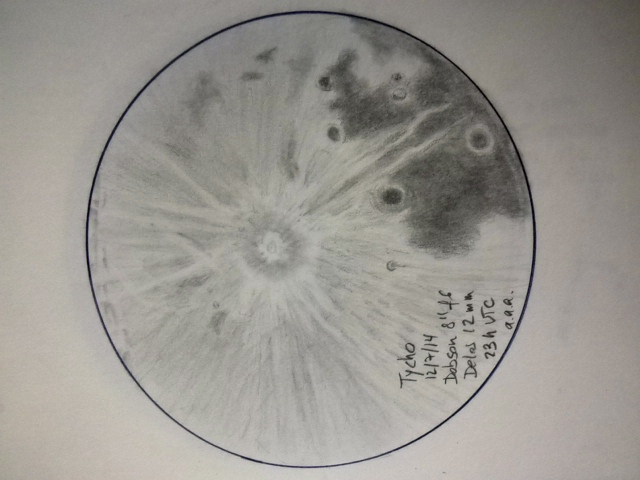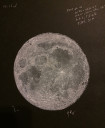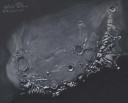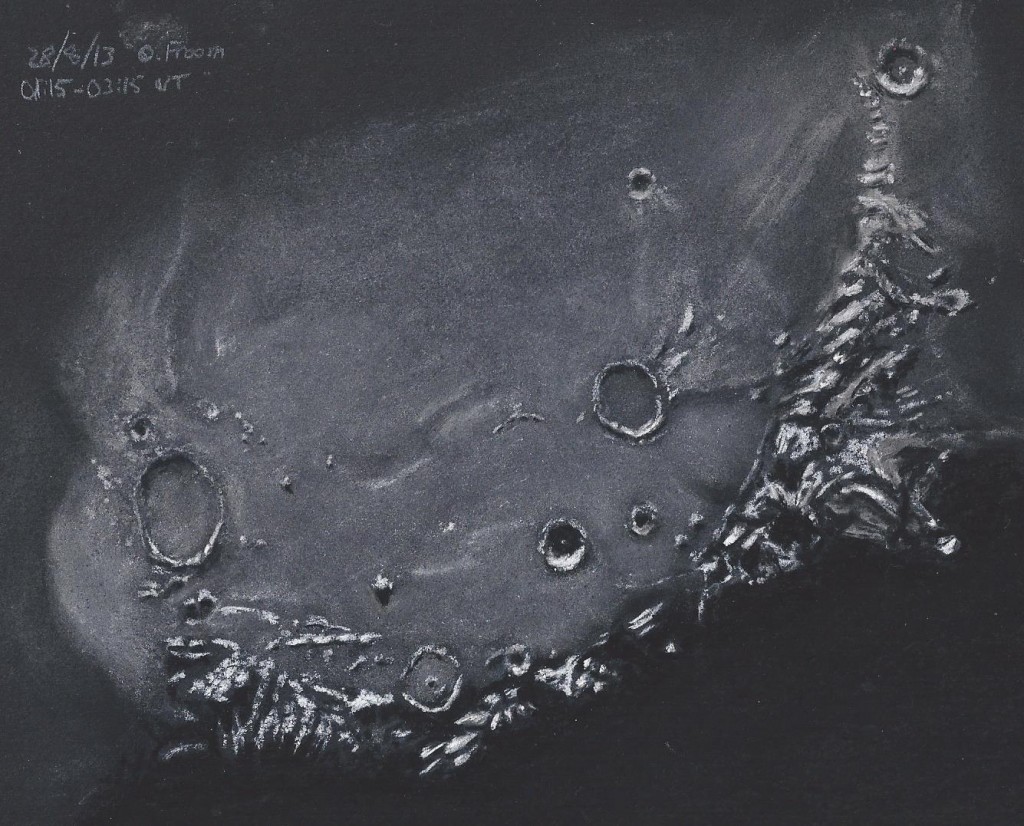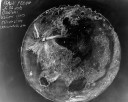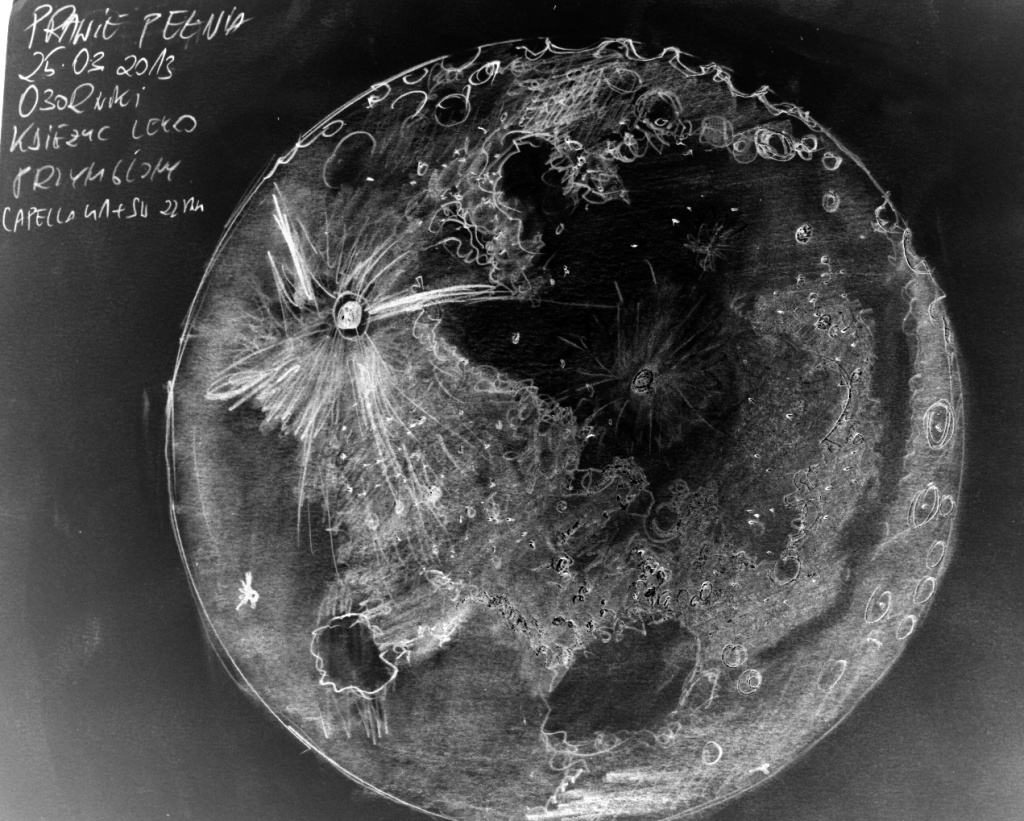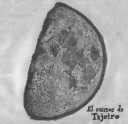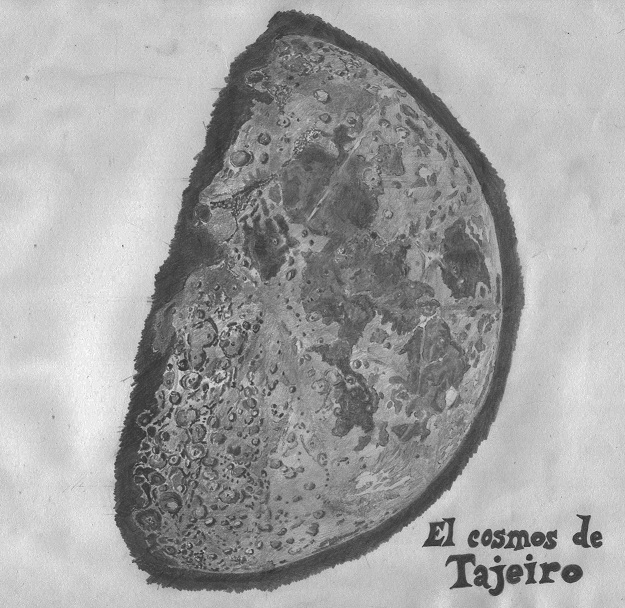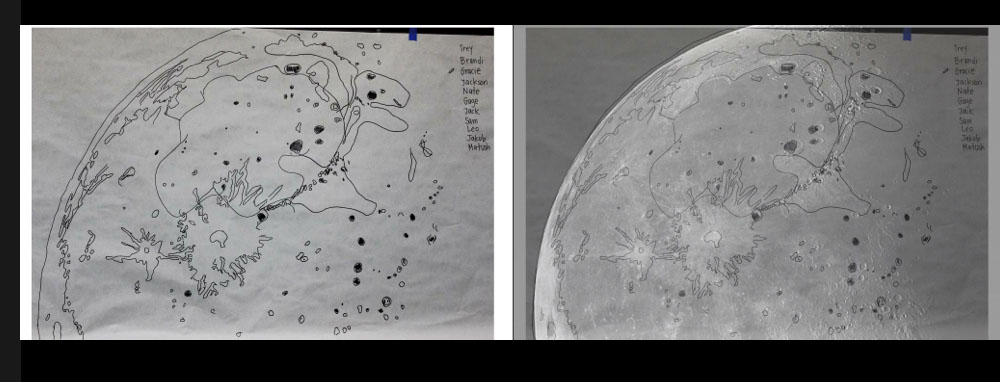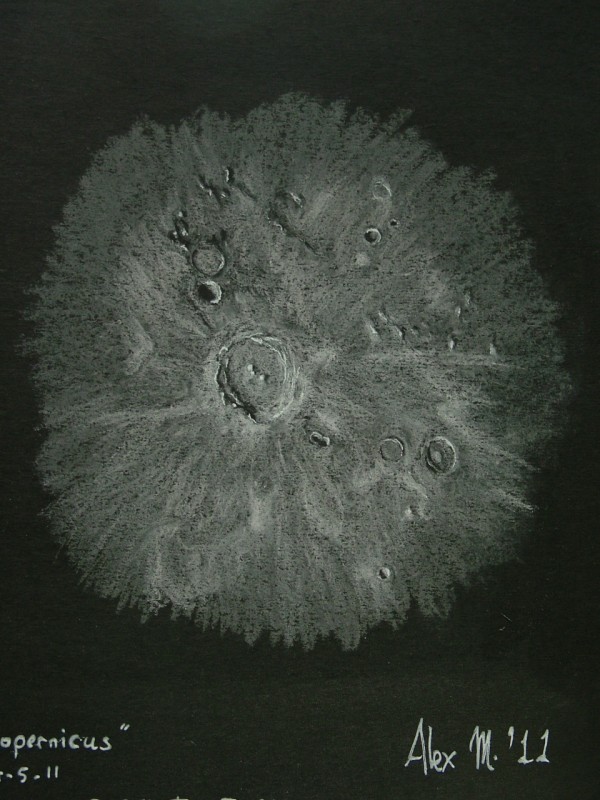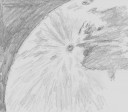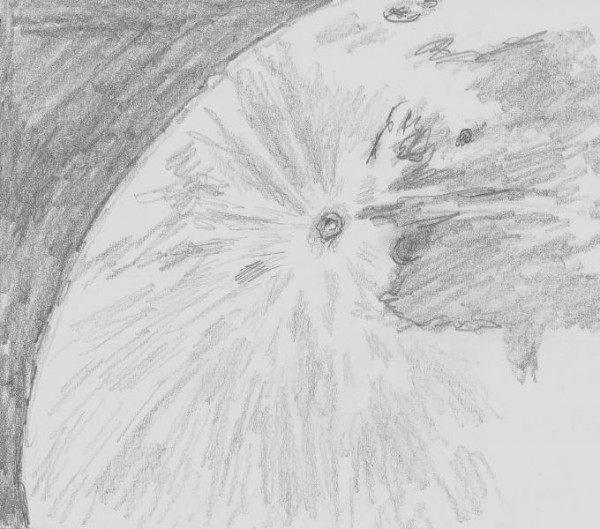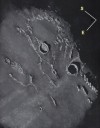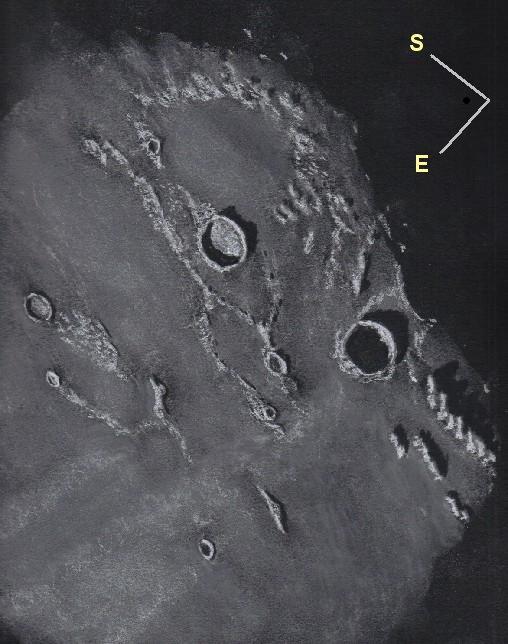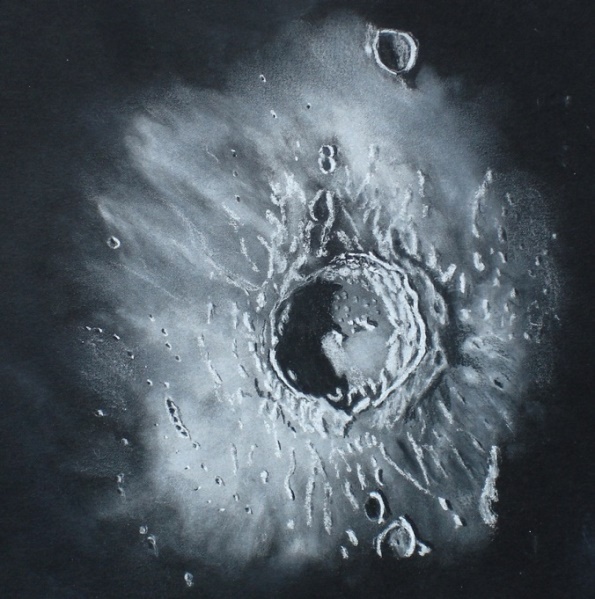
Lunar Crater Copernicus
Across the Carpathian Mountains resting on the eastern Ocean of Storms is the
landmark crater of the Sea of Islands, mighty Copernicus. Copernicus is a 95
kilometer diameter complex crater that begins to show itself in all its majesty
two days past first quarter. During the time of “Snow-Ball Earth” 800 million
years ago the event that created Copernicus suddenly occurred. What remains is a
3.8 kilometer deep hummock covered flat floored, centrally peaked, terrace walled
spectacular sentinel. Especially during high sun the bright ray system of this
crater can be seen extending from the base of the glassy glacis in all directions.
The descent from the rampart to the mare floor below is about one kilometer. Three
of five peaks were clearly visible in morning sunlight. In 1999 the Clementine
near infrared camera detected magnesium iron silicates in the peaks indicating
rebound of this deep rock through the surface crust following the impact event.
To view this impressive crater all you need is a good pair of binoculars and an
opportunity between two days past first quarter and one day past last quarter.
Weather permitting, you can see it tonight.
Sketching:
For this sketch I used: black Strathmore 400 Artagain paper, 9”x 12”, white and
black Conte’pastel pencils and a blending stump.
Telescope: 13.1 inch f/5.9 Dobsonian and 9mm eyepiece 218x
Date: 11-03-2014, 00:45 – 02:10 UT
Temperature: 0°C (32°F)
clear, calm
Seeing: Antoniadi III
Co longitude: 23.2°
Lunation: 8.9 days
Illumination: 69.3 %
Phase: 67.4°
Frank McCabe
